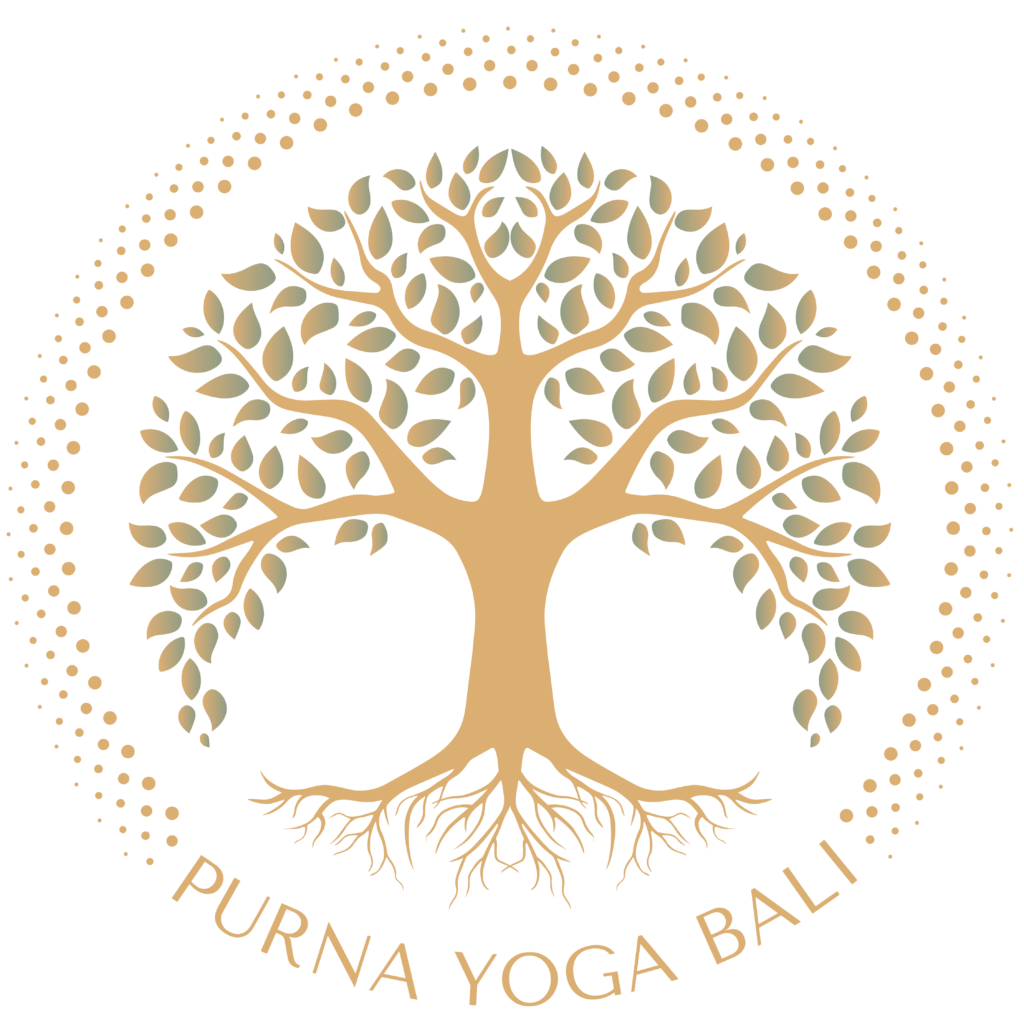Tristana is the foundation of the practice of Ashtanga yoga. As such, it is a tool to help cultivate the ultimate presence of mind, focus, and stability. Tristana consists of three parts: breath, the bandhas (energy locks), and drishti (yogic gaze).
These three tools transform our asana (physical) practice from a simple body exercise into a total mind-body experience. Tristana helps us go from a huffing and puffing workout into a graceful flow. The three essential pieces of tristana unite the actions of body and mind, using dharana (concentration) to allow the practice to become meditative.
Breath:
One of the most important aspects of tristana and of yoga in general is breathing. The fundamental technique of yogic breathing is ujjayi breath, or “victorious” breath. It is the foundation for many pranayama techniques, as well as an important practice on its own.
Ujjayi breath slows down and lengthens the breath. By filling up the lungs entirely, we increase lung capacity and help increase the supply of oxygen to the muscles. Ujjayi breath is a point of concentration for the mind that aids us in the practice of pratyahara (withdrawal of the senses). Focusing on the breath keeps the mind steady and calm, especially when poses get challenging.
Bandhas (Power Centers):
Bandha means to bind or to lock. Though it may seem a bit counterintuitive, these locks actually activate the flow of energy in the body, moving prana from the base of the spine seat into the 72,000 nadis (energy channels) of the body. You can think of bandhas as energy centers. As we create these locks, we are activating energy throughout the body, and locking it so it does not escape from the body.
The bandhas are key in asana practice. Beyond the energy flow in the body, which of course helps the energy of the pose, the bandhas also help create support for the spine and lower back during transitions. Using bandhas creates “lightness” and grace in some of the more challenging poses, such as arm balances or jump-throughs.
There are three main bandhas that we use in the practice, these are:
1. Moola Bandha, root lock.
2. Uddiyana Bandha, abdominal lock.
3. Jalandhara Bandha, throat lock.
Drishti (Yogi gaze or point of focus):
The yogic gaze, or drishti, is the third (and very important) part of Tristana. It is the direction we look at and the focus we maintain as we keep awareness on what we are seeing. The practice of drishti, or yogic gaze, is used to help us practice both focus and stability. It leads us to the concentration needed for balance and helps control the tendency to wander around following our senses. Drishti is a perfect aid in the practice of pratyahara (withdrawal of the senses). It also initiates the practice of dharana (concentration).
There are nine drishti points, and each pose has its own prescribed drishti.
1. Nasagrai: refers to the nose tip, center of ida and pingala nadis as in uttanasana and prasarita padottanasana. This is the drishti that is used most often. It is more about looking in the direction of the nose than actually at the exact tip of the nose. Otherwise you would become cross-eyed.
2. Broomadhya: refers to the third eye (Ajna chakra), as in ardha uttanasana and urdhva mukha svanasana. Look slightly up and to the center. This drishti helps us maintain a deeper focus and cultivate a stronger spiritual practice.
3. Nabi Chakra: refers to the navel or belly, as in adho mukha svanasana (downward-facing dog). Nabi Chakra helps activate uddiyana bandha.
4. Hastagrai: refers to the hands, as in trikonasana. Looking towards your hand helps further open the chest.
5. Padhayoragrai: refers to the toes, such as in parsvottonasana. Extending our gaze towards the toes helps lengthen the spine.
6. Parsva Drsti: refers to the far left as in marichyasana C and D. Not only do you get to stretch your neck, you also get to deepen the twist.
7. Parsva Drsti: refers to the far right as in marichyasana C and D. Not only do you get to stretch your neck, you also get to deepen the twist.
8. Angusta Ma Dyai : refers to the thumbs as in urdhva hastasana. We can also follow the hands as we shift between poses to help maintain the focus and steadiness.
9. Urdhva Drishti: Urdhva drishti means upward gaze as in utkatasana. Taking the gaze up helps extend the spine and open the heart. Make sure not to compress in the neck while taking the gaze up.
Learn more about the Tristana method with Rohil by watching the below video.




4 Responses
I agree with your arguments, well said.
I highly value your ability to simplify complex ideas in a digestible manner. Well done!
I’m impressed by your ability to turn even the most ordinary topics into engaging writing. Well done to you!
I admire your ability to simplify complicated concepts into comprehensible portions.